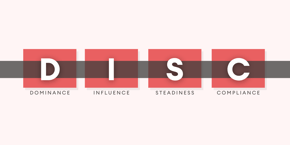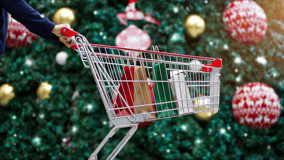Opportunity knocks for industry at forefront of coronavirus fight.
Alex Witcpalek, cleaning market specialist and director of sales for North America at sales enablement software developer, sales-i.
Delegates preparing for this year’s virtual ISSA Show North America will be reflecting on a whirlwind year, which has seen their industry unexpectedly thrust to the forefront of tackling a global pandemic. As with all other areas of the US economy, the Covid-19 crisis has had a major impact on manufacturers, wholesalers and distributors across the $117 billion cleaning industry, but with cleaning and hygiene products experiencing such unprecedented demand, the challenges and opportunities have been much more focussed on ramping up production or diversification, rather than the wholesale scaling back we’ve seen in some other sectors.
Supply and demand steals the spotlight
Disrupted supply chains, product availability challenges and highly unpredictable customer demand have all been hallmarks of commercial life under Covid for the cleaning sector. From the outset, cleaning product sales experienced some major surges as consumers prepared to take extra cleaning and hygiene measures in their homes. During the first week of March, sales of a range of the most popular cleaning products were up significantly across the board compared to the same period in 2019, with multipurpose cleaners up over 140%, bath and shower wipes 180%, and aerosol disinfectants 385%, according to business data provider Statista. This obviously proved great news for distributors selling into consumer retail markets.
It has been a somewhat different story for suppliers serving commercial markets like the hospitality sector, many of whom saw their customers forced to shut their businesses overnight, resulting in significantly reduced demand for cleaning products for many weeks, only to see demand return with a vengeance once individual states economies reopened. Of course, for suppliers to sectors that have remained operational throughout the crisis so far, such as healthcare and public transportation, the past six months have been a boom period, especially for players offering new and emerging Covid-ready cleaning methods such as disinfectant spraying solutions, which are now being used routinely in a variety of everyday commercial and public locations across the US.
Competition intensifies
One of the biggest challenges facing existing market players during this unique period has been an increase in competition, both from new market entrants and distributors from other sectors, such as office equipment suppliers expanding their product ranges to take advantage of surging demand. Against this backdrop, distributors have been doubling down their efforts to get closer to their customers and understand their needs better – with good reason. The majority of distributors in the industry are smaller ‘mom and pop’ operators, who typically rely on the repeat business of a handful of customers to survive. For these players, ringfencing businesses is more important than ever.
Increasingly we are seeing smaller operators turn to sales enablement technology to help them better understand customer buying patterns, identify under and over performing sales lines and essentially better manage their customer relationships. Most suppliers carry swathes of data on their customer relationships yet fail to adequately collate it, let alone use it to inform sales strategy. In an era when taking advantage of cross and up selling sales opportunities will be important for maintaining cashflow, many operators are finding data-driven sales strategy can give them the edge.
New markets mean new opportunities – and require a fresh approach
With everyone from governments to corporates and individuals having a heightened focus on hygiene and improved cleaning protocols, there are myriad opportunities ahead for distributors to service new requirements, both in commercial and consumer facing markets. With so many operators looking to secure their own piece of the pie, however, wholesalers and distributors will need to be at the top of their game to thrive. That means considering a variety of operational measures such as investigating new supply chains to better ensure consistency of product supply, shoring up their product portfolios to include tried and trusted brands that consumers already know and respect, as well as embracing green cleaning offerings and ensuring they can demonstrate industry expertise backed up by accreditations.
In this new operating environment, those looking for a competitive edge are already embracing technology to streamline processes and back office systems, as well as embedding data-driven selling strategies. Technology has absolutely come to the fore across the US during the crisis and we expect more players to continue their tech adoption as they ready themselves for the commercial realities of the post-Covid world.
A turbulent but ultimately bright horizon ahead.
As the pandemic continues to unfold, much uncertainty remains about what lies ahead for the US economy. Unlike many other sectors however, the short to medium term future for cleaning industry is bright. The household cleaners market, for example, is estimated to be worth more than $40.38 billion by the year 2025 alone. The pandemic has forced businesses and consumers alike to adopt a fresh approach to cleaning and hygiene, one that is set to endure as economies learn to live and work alongside the virus.
We are also seeing much consolidation in the space as larger operators look to acquire the best of the many thousands of smaller players in the arena. Whatever their focus, businesses looking to thrive through this turbulent period will need agile, operationally efficient and acutely customer focussed to truly prosper, whatever the new normal might bring.



